The Comfort Food Sweeping Korea
Yes, you can make fist rice at home—but do you know its surprising backstory?
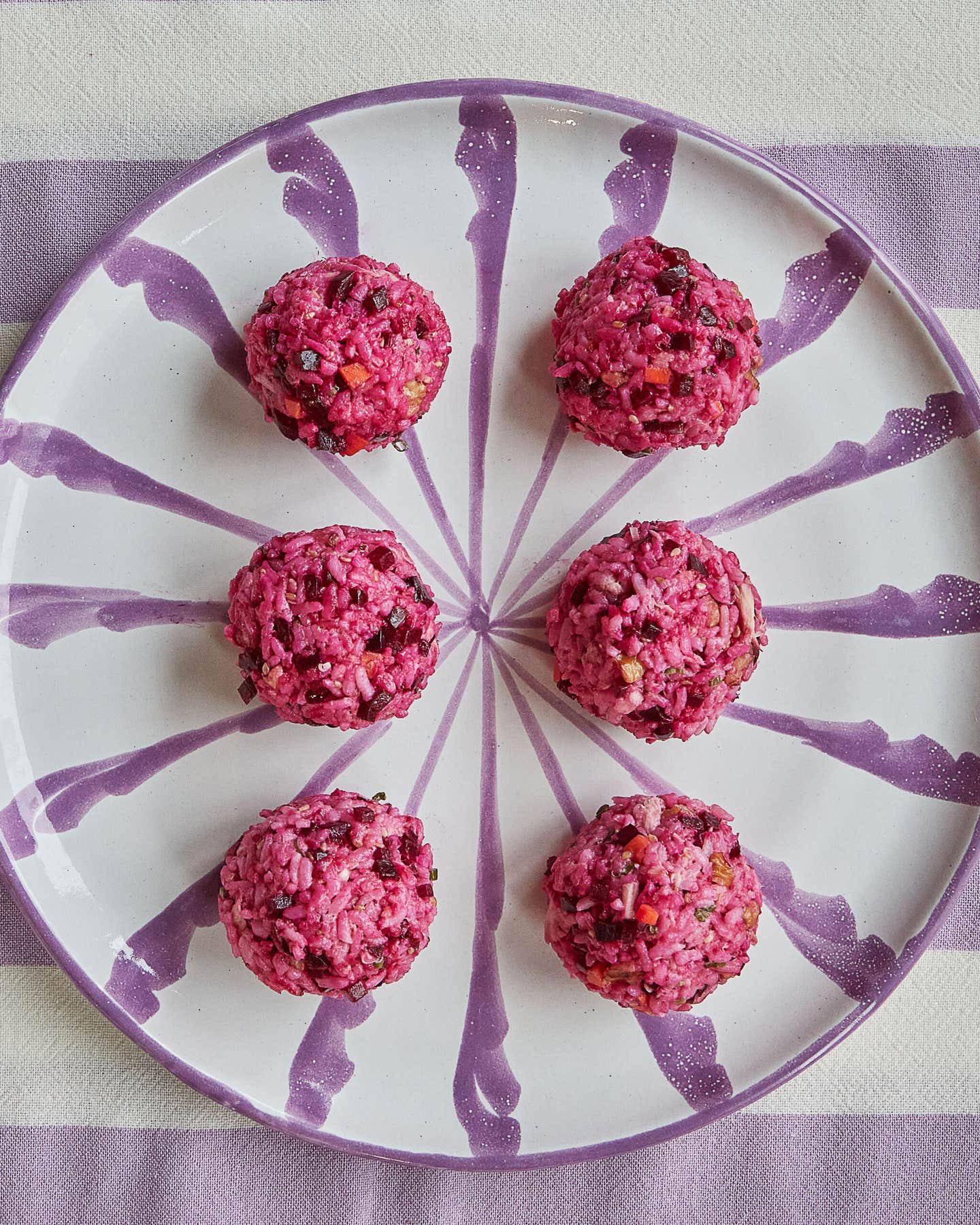
Many countries have some variation on rice balls in their cuisine. Italy has arancini, breaded and fried. Kerala, India has cardamom-spiced mandaputtu made with rice flour. And Korea has jumeokbap (literally, “fist rice”): freshly steamed grains mixed with various seasonings, condiments, and fillings and hand-packed into tennis ball-sized spheres.
Korean people have been rolling rice balls since the 17th century, toting them in woven baskets, pieces of cloth, or even leaves for quick, convenient meals. Throughout history, jumeokbap have also been served in prisons, and eaten by soldiers in the trenches of the Korean War. Yet today the humble food of necessity has evolved into a hip culinary delight that exists in a wide range of interpretations all over Korea, from rural convenience stores to Gangnam’s trendiest sit-down eateries.
In addition to classic ingredient combinations like tuna and mayonnaise, one can now find new-fangled iterations including myeongran (pollock roe) and gamtae, a variety of seaweed harvested only in Korea’s mudflats. Though their predecessors are traditionally simply steamed, contemporary jumeokbap may also be grilled, fried, baked, or even shaped around a molten, cheesy core or a soft-boiled egg.
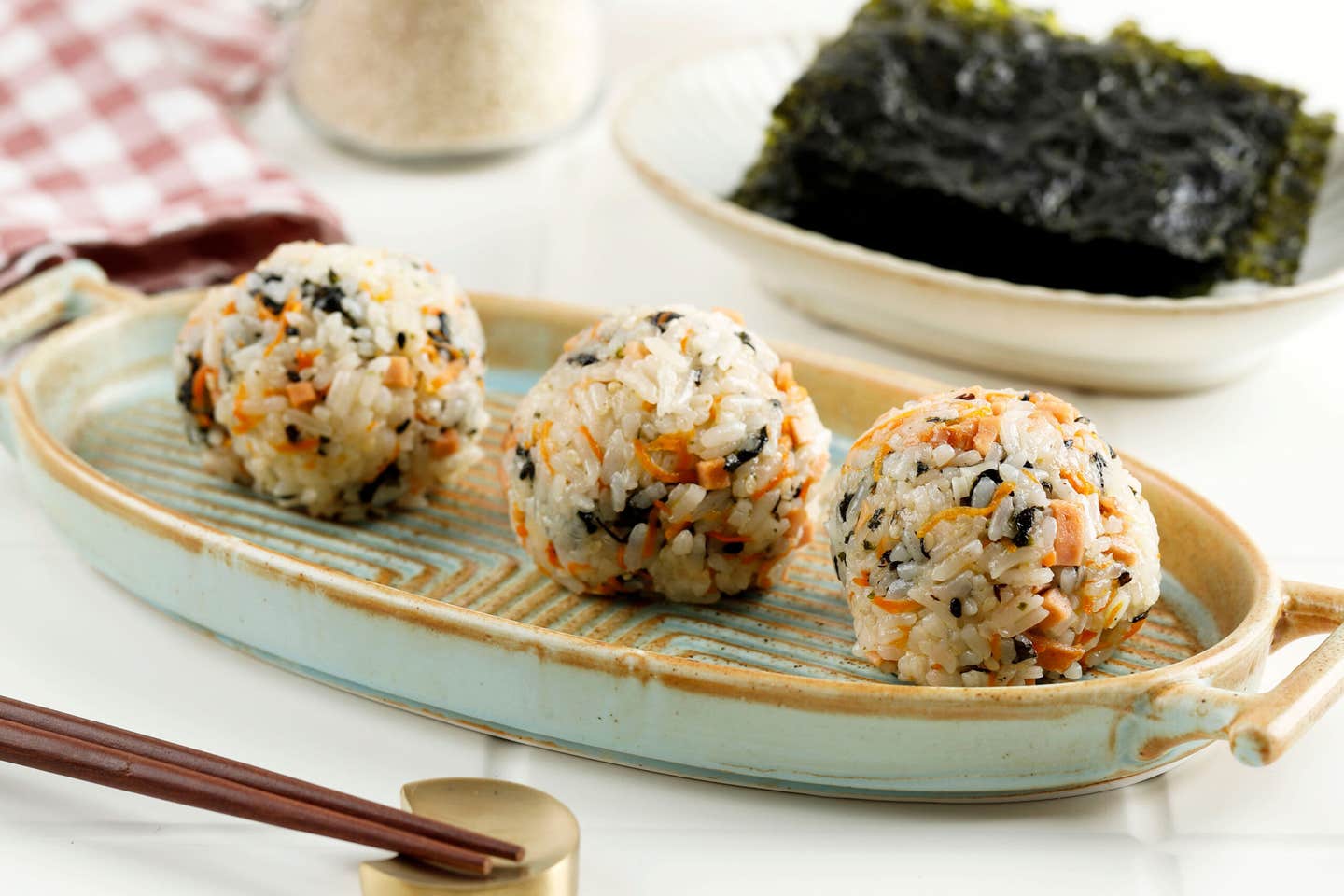
Jumeokbap is also reaching audiences beyond the bounds of Korea. Last year, Warsaw-based Basia Starecka, creator of the Asian food blog Nakarmiona, showed off her own jumeokbap creations, using ingredients sourced from her local Asian grocery store, Wawa Mart. In Thailand, restaurants have begun delivering jumeokbap kits to customers who want to make their own—just as many dining spots in Korea already do.
How did jumeokbap, a humble food that has existed in Korea for centuries, roll its way into the hearts of today’s young Koreans—and people all over the globe?
For starters, the “Hallyu” phenomenon—an ongoing global fervor for Korean pop-culture products, originating from the Chinese term for “Korean wave”—has also extended into the realm of food (like in this “Squid Game” inspired jumeokbap).
According to the Korean Food Promotion Institute, the number of Korean restaurants around the world has nearly tripled in the past decade. Morgan Stanley Research indicates that Korean food exports generated $5 billion for Korea in 2018—and could exceed $10 billion in 2023.
The COVID-19 pandemic boosted the popularity of jumeokbap as well. As people cooked for themselves under home quarantine, they embraced the dish’s versatility and its “anything goes” vibe. A simple food with DIY appeal, jumeokbap was an easy dish for those venturing into Korean cooking, using pantry staples and whatever fresh ingredients were on hand.
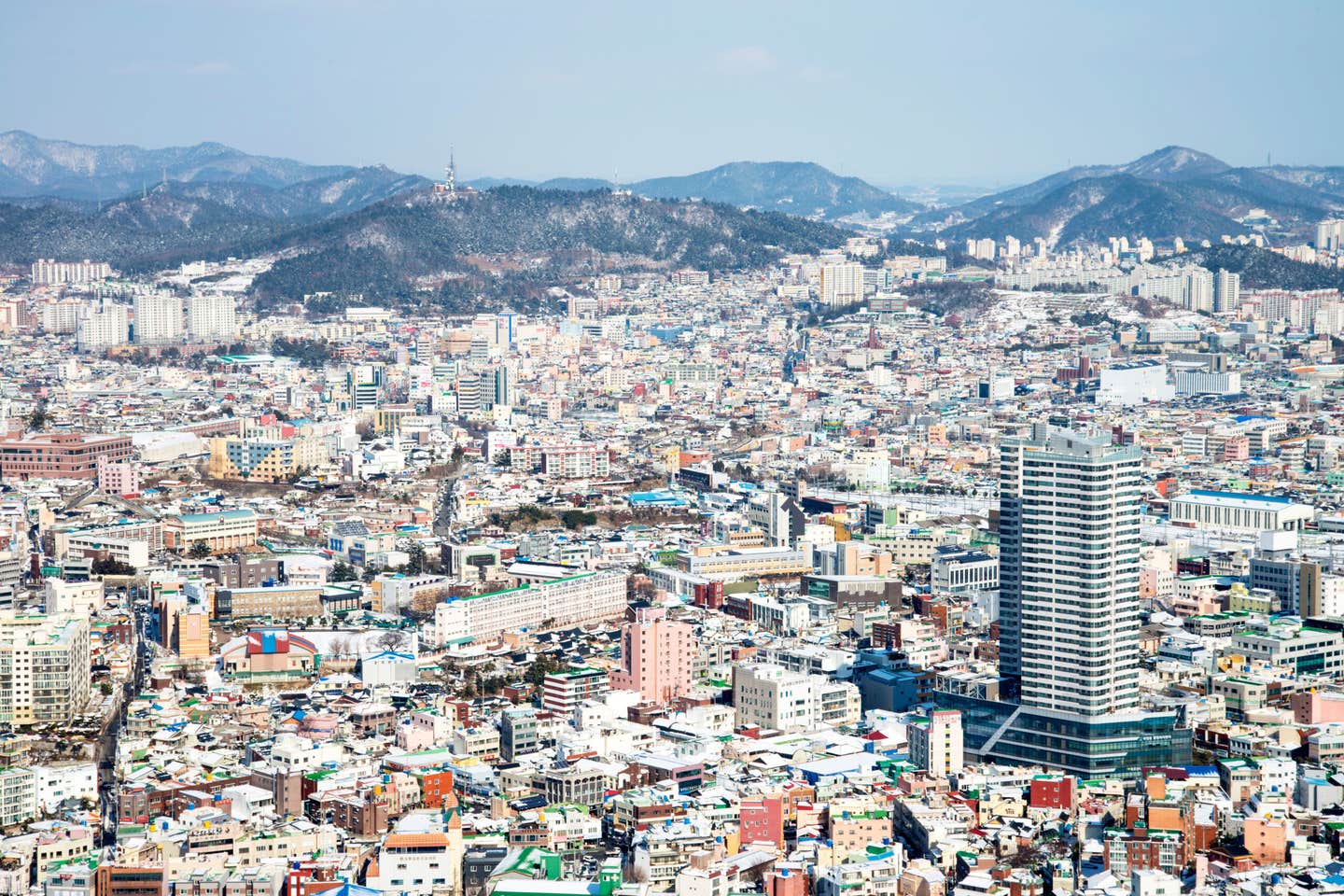
After all, fist rice originated as an economical food—with strong historical ties to the outspokenly democratic, working-class city of Gwangju in the southwestern province of Jeollanamdo. Sprawling outward from the foot of Mount Mudeung, Korea’s second poorest city draws crowds with its wealth of traditional arts and renowned cuisine, ranging from its famous duck stew to a seemingly infinite variety of banchan side dishes. (Recently, the municipality has also enjoyed special recognition as the hometown of K-pop star and BTS member, J-Hope.)
Gwangju also happens to have been the site of a democratic struggle remembered in Korea as “5.18.” In 1980, military dictator Chun Doo-hwan took over the Korean government and citizens protested nationwide. When students at Gwangju’s Chonnam University gathered for a peaceful demonstration on May 18, Chun decided to make an example of the city. He ordered a military crackdown which devolved into a massacre, resulting in thousands of civilian casualties over a 10-day period.
The people of Gwangju and surrounding areas desperately fought back with blunt objects and homemade weapons against the well-armed riot police and special forces, who were equipped with tanks and automatic weapons. When the freedom fighters ran out of food because the city was blockaded from the outside world, mothers and merchants set up assembly lines to distribute jumeokbap. People shared their last grains and pieces of yeontan (round, perforated coal briquettes) to steam rice over open fires in the dangerous streets.
Jung Hyang-ja, the head of a local labor union chapter, was 30 years old at the time. She helped pass out jumeokbap, raising fists of rice against the regime. On May 27, the uprising was extinguished by military forces. For over a decade afterward, commemorations of the 5.18 protests were prohibited. Jumeokbap receded into the shadows as a secret passed around among those determined to remember the sacrifices Gwangju had made in the fight for Korean democracy.
In 1997, trouble resurfaced for the people of Gwangju when millions of Koreans lost their jobs and assets after the Asian financial crisis. Jung and others in the community took to the streets once more, handing out rice balls to the hungry.
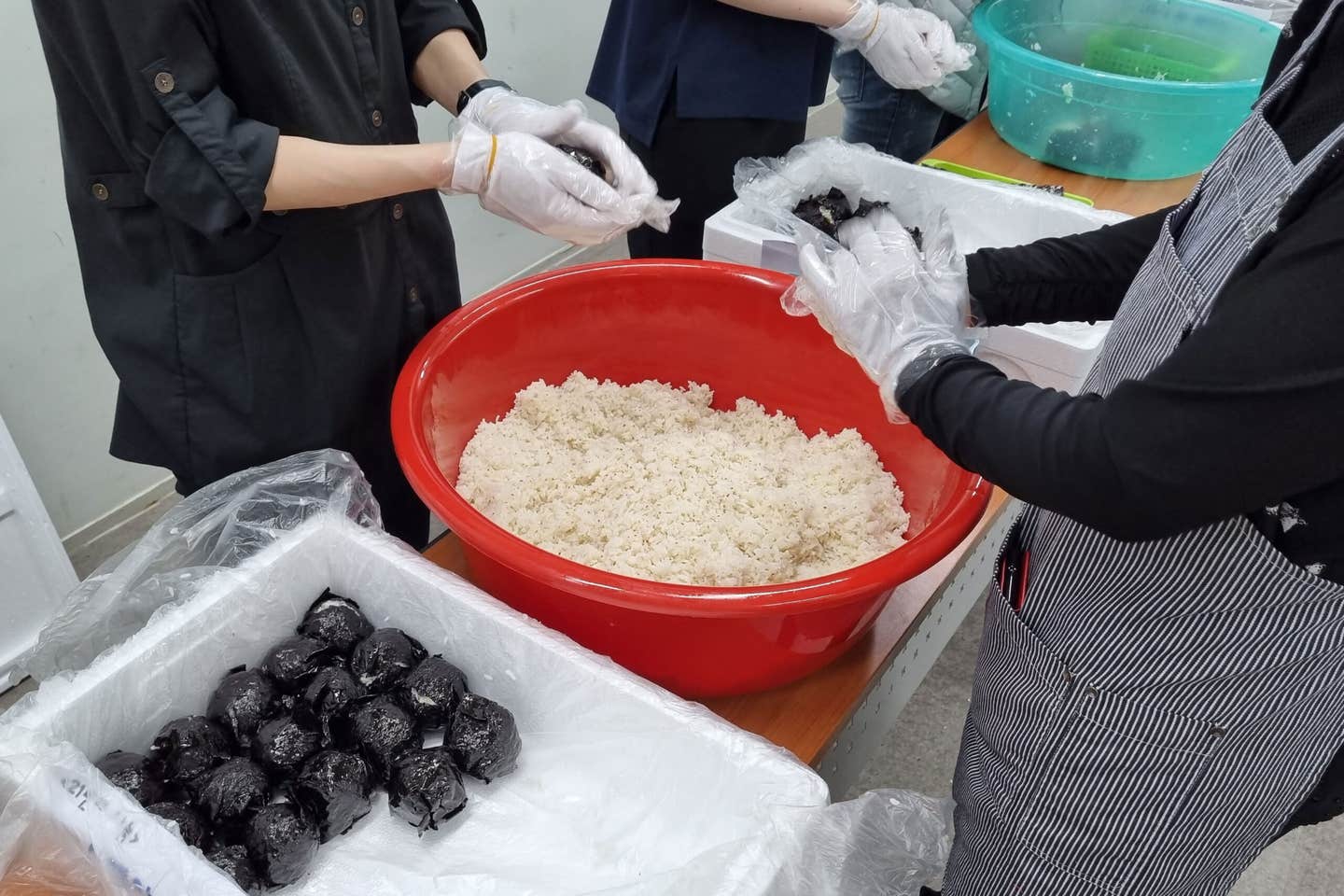
Jung again gathered a team of volunteers to make jumeokbap in 2001 for the city’s laborers and 5.18 survivors—this time to acknowledge the lasting effects of the financial crisis while honoring the legacy of the democratic uprisings. Since then, each May, the group has made fist rice to express gratitude to those who fought back against an oppressive regime.
Recognizing the powerful symbolism of jumeokbap, Gwangju city officials designated the dish as one of the city’s seven official representative foods in 2019. The government also provided financial support to new and existing restaurants seeking to serve jumeokbap.
Though Jung was glad to see jumeokbap elevated as a hallmark of Gwangju’s resilience and unity, she worried that the deeper meaning of the food itself might get lost in the city’s initiatives to commercialize it.
Local chefs like Im Hyun-sook seem to have found a balance between historical integrity and innovation. Im was in fifth grade during the turmoil of 5.18, crouching in her home as bullets flew outside. After recently inheriting her mother’s restaurant, Im wanted to pay homage to 5.18 by adding jumeokbap to her menu. She developed new renditions with nutrition and taste in mind, augmenting the plain rice balls of 1980 with ingredients like dried anchovies, crumbled walnuts, and chopped beets. Her restaurant, Haengbokhan Yangrim Bapsang in the cafe-lined historic Yangnim-dong district of Gwangju, is one of the few jumeokbap purveyors in the city to have survived the pandemic. (In late September, Im catered meals for UNESCO officials who were in town.)
Today, schoolchildren often take field trips to 5.18 Freedom Park, visiting the site of military barracks where human rights atrocities took place. Afterwards, they each receive their own jumeokbap and learn about how the dish brought hope and nourishment to struggling citizens. The May Mothers’ House, a center with programming for women who lost loved ones or were injured during 5.18, shows tour groups how to make jumeokbap while sharing personal stories.
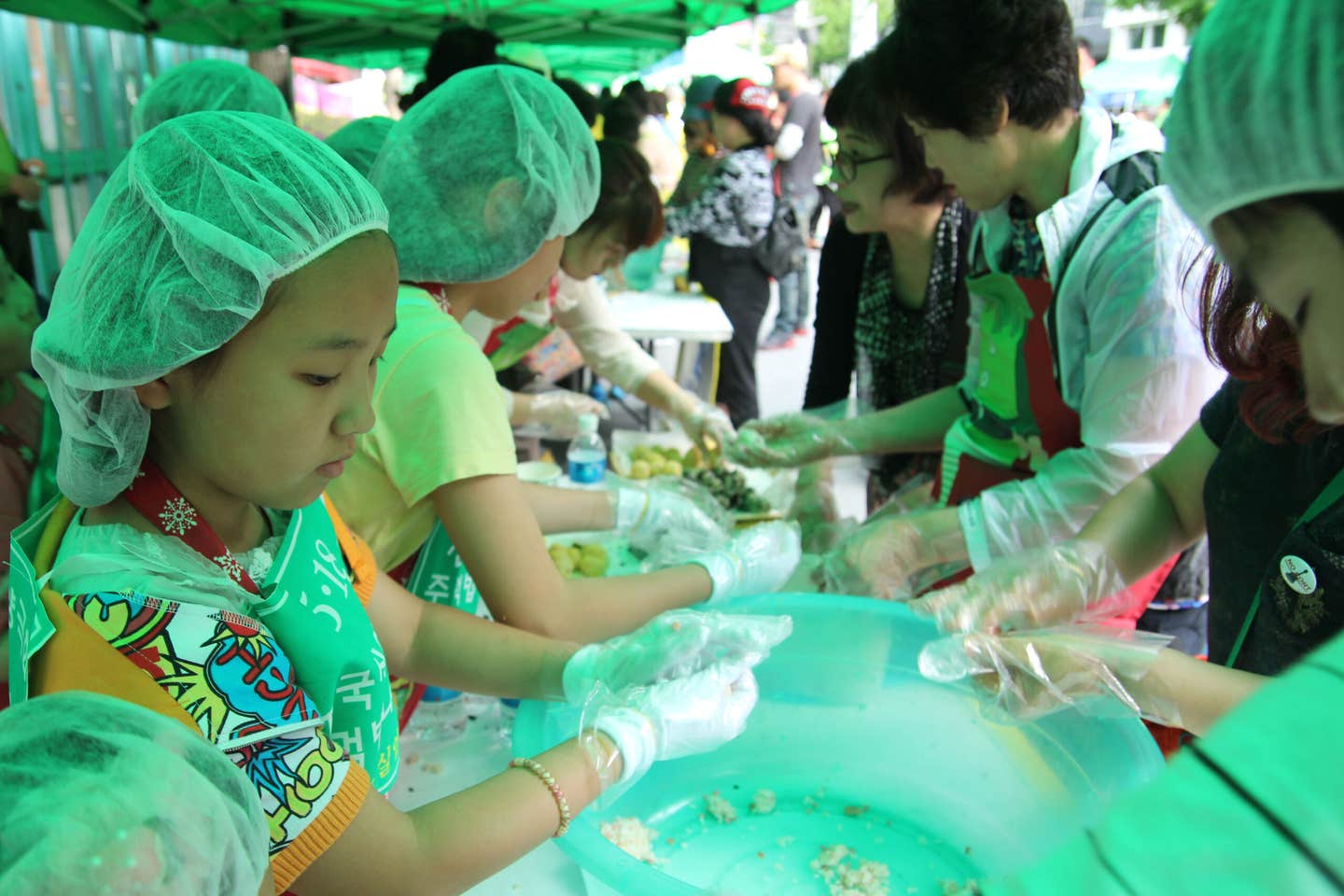
Tours featuring communal jumeokbap-making have become a significant draw for visitors. But one needn’t travel to Gwangju to partake. In the U.S., Korean American chef Chris Cho shared the steps to his jumbo tuna-filled edition. Maangchi, author and YouTube maven of Korean cuisine, has shown the way to a fried and flattened version. Cookbook author Joanne Lee Molinaro published a guide to vegan jumeokbap. And Im Hyun-sook shared her own recipe with us.
Fist rice forged its image through strife. But now that people all over the world are making and sharing the dish, jumeokbap’s connotations of goodwill, healing, and unity have come to the fore. As global citizens pack their fists full of warm grains and sit down to share their variations on a timeless meal, they are also keeping Gwangju’s spirit of solidarity alive—whether they know it or not.
Recipe
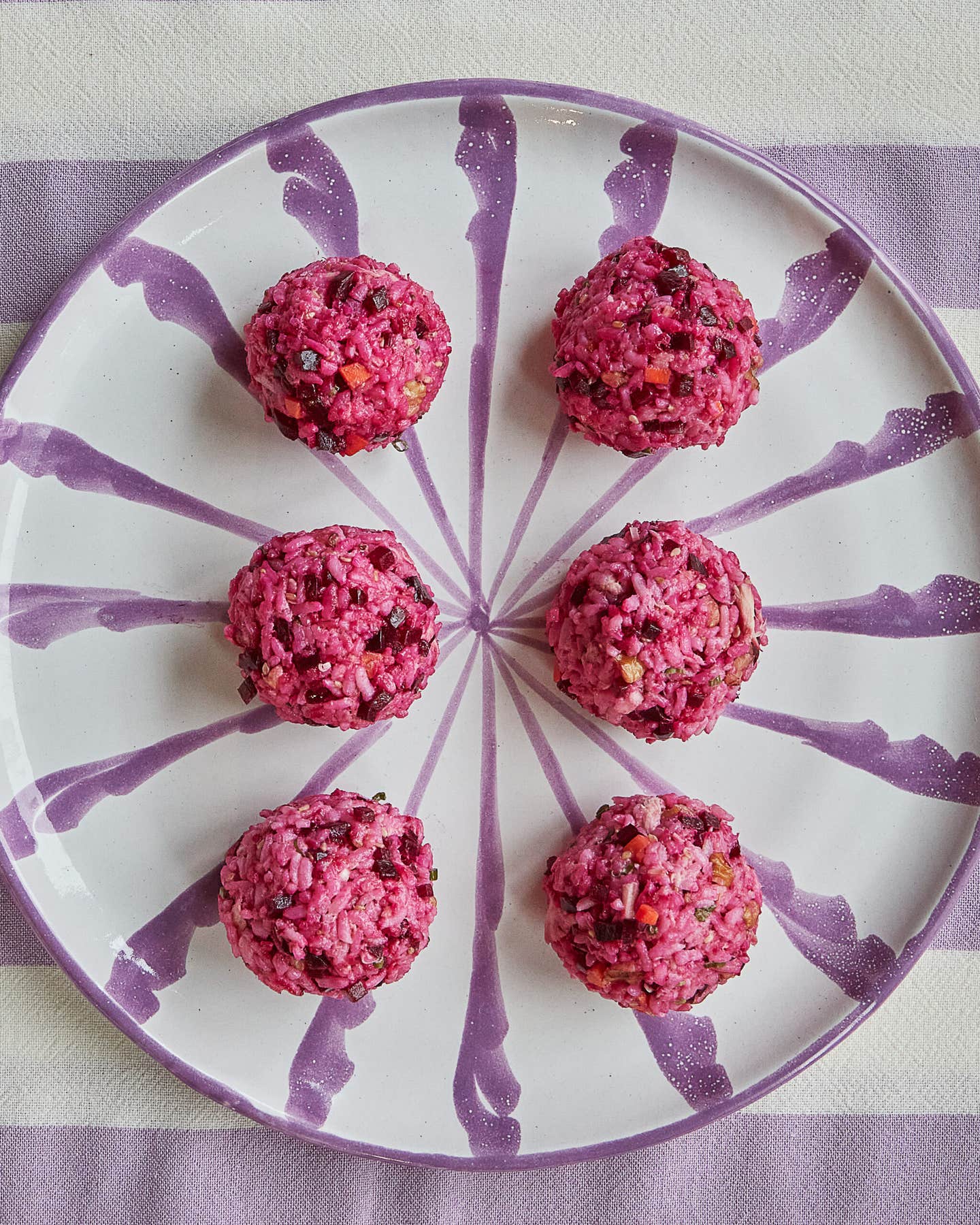
Keep Reading
Continue to Next Story










